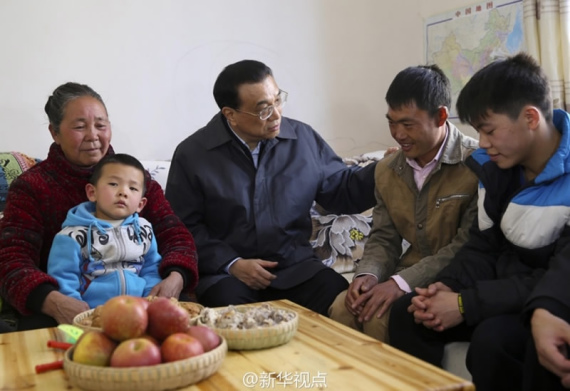
Chinese Premier Li Keqiang (C) visits a migrant worker's home in Ludian County, Yunnan Province in southwest China on January 23, 2017. (Xinhua Photo)
Meanwhile, the government made efforts to create new growth engines in the agricultural industry and expand the channels through which farmers can increase their income, including promoting e-commerce in rural areas and taking precise, targeted and differentiated measures to ensure effective poverty reduction.
The per capita income of urban households was 2.72 times that of rural households, down from 2.73 times in 2015, NBS data shows.
With the narrowing gap between urban-rural incomes, Chinese farmers saw another bumper harvest last year.
Although China's grain output dropped 0.8 percent year on year to about 616 million tons in 2016, ending a 12-year rising streak, it was still the second highest year on record.
Meanwhile, the government made efforts to create new growth engines in the agricultural industry and expand the channels through which farmers can increase their income, including promoting e-commerce in rural areas and taking precise, targeted and differentiated measures to ensure effective poverty reduction.
From August to October last year, the ministry held five workshops on poverty relief for 500 representatives from impoverished villages across the country, who were shown the modernization process of agricultural enterprises, farmers' cooperatives, family farms and leisure farms in the suburbs of Beijing. The representatives returned home with broadened horizons and know-how to help their neighbors succeed in their businesses.
By the end of 2016, more than 10 million rural residents had been lifted out of poverty, reaching the annual target.


















































